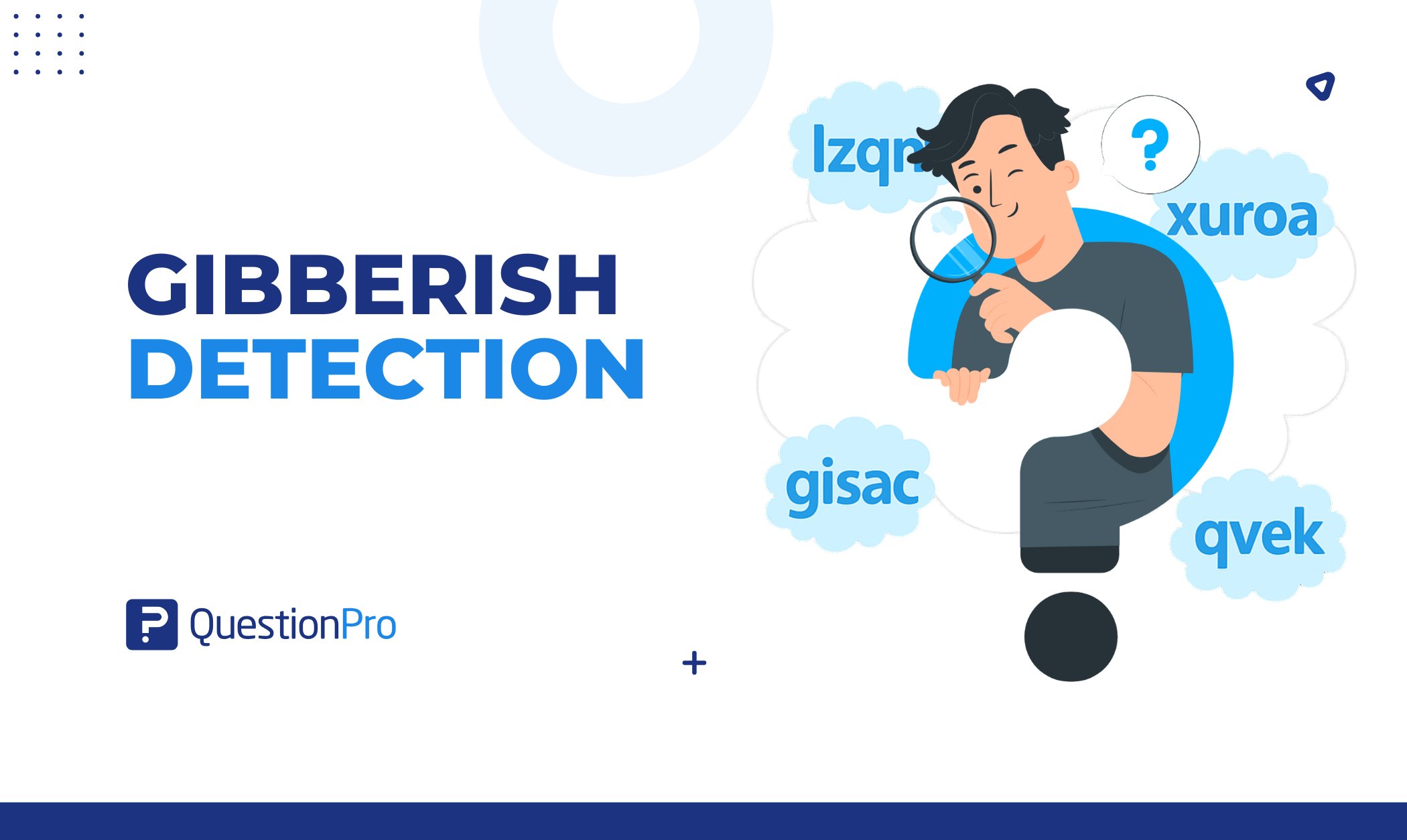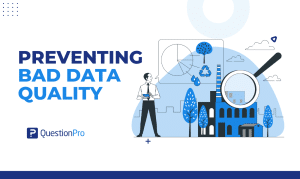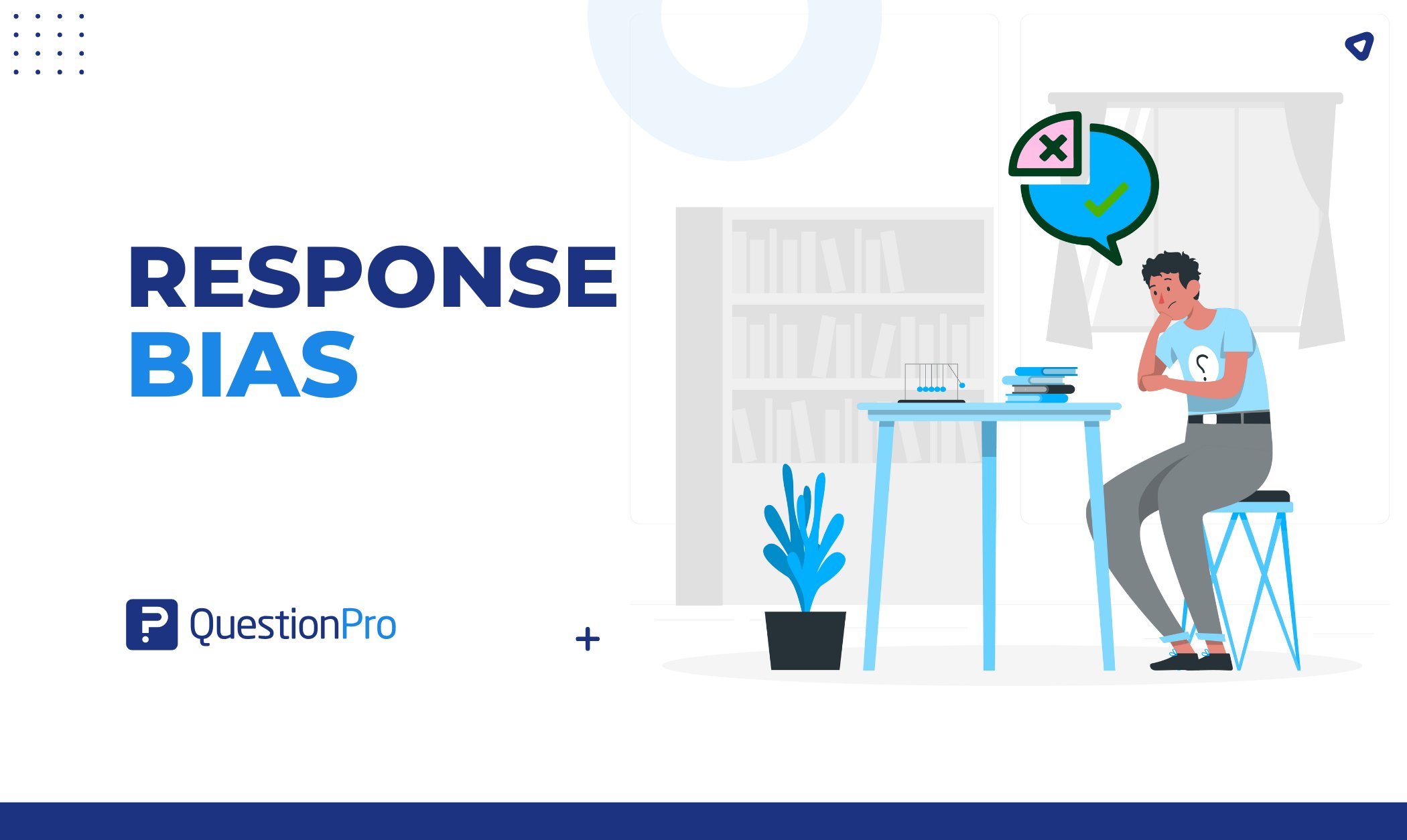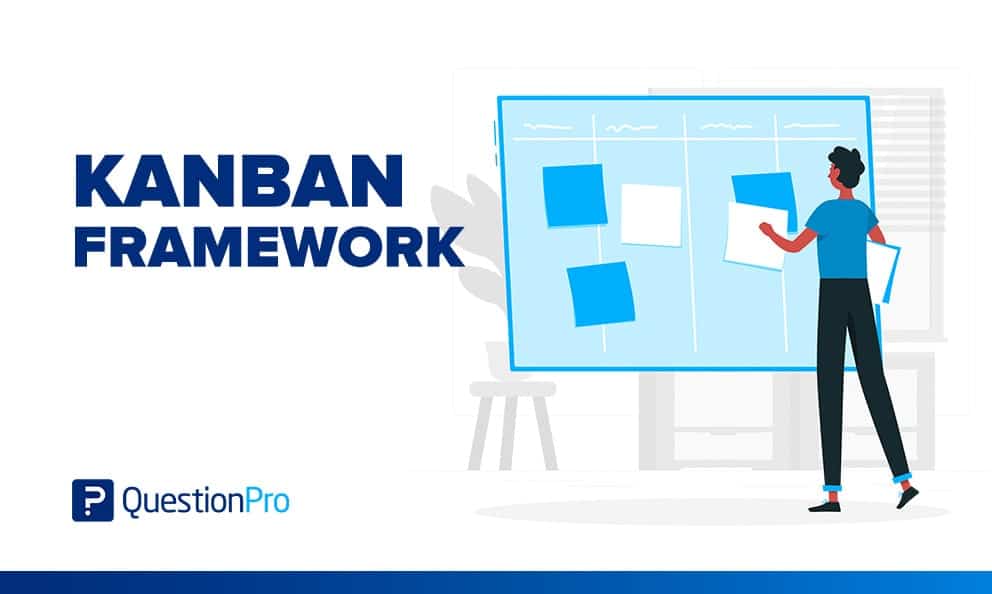
The Kanban framework is one of the most popular project management methods in use today. However, if you’ve never heard of it before, then this post is for you.
We will be discussing how to implement the Kanban Framework into customer mapping and why this process has become increasingly important over time.
- What is the Kanban Framework?
- What Is a Customer Roadmap?
- What Are the Benefits of Customer Roadmap?
- How to Implement Kanban in Customer Roadmap?
- What Is Kanban Board?
- What Are Some Important Kanban Principles You Can Use in the Roadmap?
- What Are the Steps to Implement a Customer Roadmap Using the Kanban Board?
- What Are the Advantages of Kanban Roadmap Implementation?
- Conclusion
What Is the Kanban Framework?
The word “kanban” means signboard or signal flag in Japanese. It was developed by Toyota Production System as a way to visualize workflow throughout their production line and identify where potential bottlenecks may arise.
This system works best when there are lots of different steps that don’t happen simultaneously but rather happen sequentially-like at a manufacturing plant where workers have to do one task after another until they produce a product.
This framework can be applied to almost any efficient workflow because it requires constant visualization of where the process is at and how many steps are left until completion.
It’s really hard to visualize work when there are too many different things going on simultaneously, so Kanban helps teams focus on their tasks more easily by breaking down each task into smaller steps and then treating those steps as separate work items.
Kanban can be used in place of or alongside other workflow management systems.
However, it’s important to note that the kanban board needs to have a physical representation for people to see and work from because you’re trying to visualize your team’s steps with this system.
It has become extremely popular among online marketing teams as well as with businesses that rely on an agile work environment.
What Is a Customer Roadmap?
Customer roadmap helps businesses get clear on what they are doing, how it works for your business, and where you’re going. It gives clarity to everyone in the company about who’s working on what, why they are doing that thing, and when it will be completed.
This roadmap helps in the process of communicating with the client and aligning their expectations, as well as making it easier for employees to know what they should be working on.
What Are the Benefits of Customer Roadmap?
Setting up a customer roadmap is important for managers, stakeholders, and creatives alike as it sets realistic expectations about what can be achieved and when.
This also makes sure that everyone is on the same page about what’s happening and why which can prevent confusion.
Having a customer roadmap puts you in control of your work life as it tells you when things are due so that there is no need to worry about missing deadlines, or working long hours before projects are completed.
The roadmap acts as a guide to the business owners on what they need to accomplish in a certain time frame.
It also helps them get an idea of how their work relates to other team members and which projects are critical for the organization’s growth. It is extremely vital to have roadmaps because they outline a plan for the future.
They also help in making significant changes to existing processes and give teams an idea of what needs attention at any given time.
Customer Roadmap helps pinpoint the right time of launching a new feature or product, deciding on which customer segment to focus on next.
A customer roadmap is used by product managers as a working document that outlines steps towards achieving goals set out for their products or services. This can be done either by releasing new features or increasing sales.
To create a customer roadmap, it is important to set out some ground rules that are specific to your organization or project. These rules should be documented so everyone knows exactly what they mean and how the framework will work in practice, for both new projects as well as ongoing ones, now let us look into how the kanban framework can be used effectively in the customer roadmap.
How to Implement Kanban Framework in Customer Roadmap?
As discussed, Kanban is a method that organizes work to achieve better customer value.
It was developed by Toyota and it later became part of the Lean manufacturing concept which uses the knowledge from the lean philosophy, kaizen, jidoka, and so on.
In kanban mapping, you can improve your processes so they are more efficient and flexible for customers.
You would be able to see where work is being held up in the process and understand customer-related issues. Kanban offers several means for analyzing and managing your roadmap and customer value.
It can help you in prioritizing features and identifying areas of improvement. When you are implementing the kanban framework in customer data mapping, it is important to choose a good tool for your company.
This can help everyone involved in product development understand what needs to be done and make better decisions about how to prioritize work. Customer feedback should also play an integral role when you’re developing new products with your team using this framework.
What Is Kanban Board?
Kanban Board is a change management and collaboration tool. The board essentially consists of columns representing various stages of the workflow.
Kanban board is a visual representation of work. The horizontal axis represents the workflow, and each stage has its column on this axis. It allows team members to see what’s in progress (in “doing”), what has been recently completed (in “done”), and tasks that need to be done next (in “to do”).
The board allows your team to visualize the status of all work in progress, which is a great help for collaboration and quick decision-making about what should be done next or even whether it makes sense to do something at this point.
It also limits WIP (work in process), i.e., sets up rules that govern how many tasks a team member is allowed to be juggling.
What Are Some Important Kanban Framework Principles You Can Use in the Roadmap?
The idea behind Kanban is simple – limit your team’s work in progress so that it never gets ahead of itself, but also has enough capacity to complete everything on time.
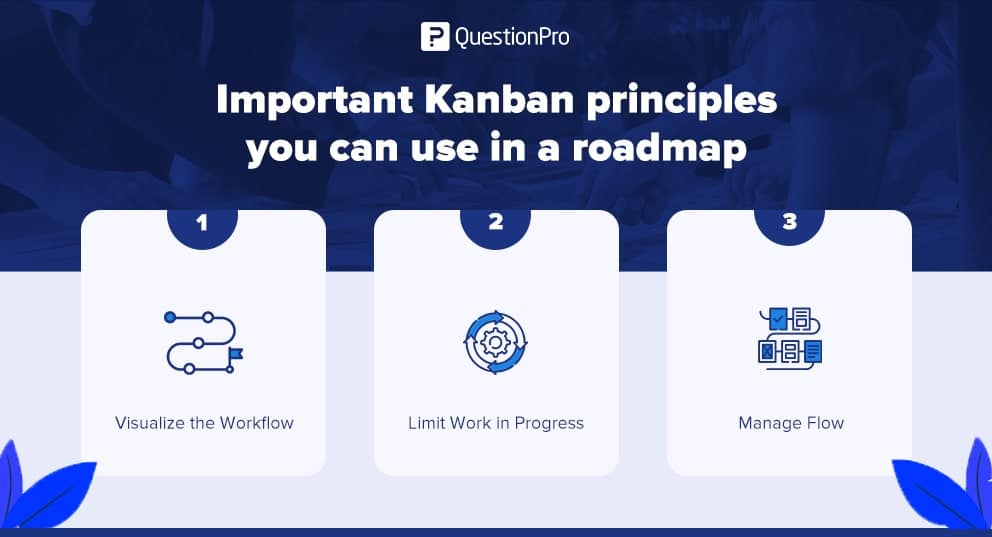
Visualize the Workflow
When the tasks are made visible, team members can see what has to be done and how long it will take.
The kanban board is a graphical representation of the workflow and provides an overview for everyone involved in the process.
You track the work on sticky notes, which are placed in the columns of the board.
Limit Work in Progress
We want to avoid having too many tasks being worked on simultaneously because it decreases productivity and increases errors. A team member should only be allowed to have one task at a time for example. The upper limit that you set is up to your judgment.
Manage Flow
The kanban board enables the team to understand where their work is in the workflow, so they can identify problems and improve processes as needed by making changes such as adding or removing steps from the process, splitting a large task into multiple smaller tasks, or reducing the wait time between certain steps.
What Are the Steps to Implement a Customer Roadmap Using the Kanban Board?
Following these simple steps, you can achieve your goal. We will be discussing the importance of each step in detail below:
Step 1: Importance and Need for Customer Roadmap
Customer Roadmap is a useful framework that helps teams to focus on delivering business value continuously through prioritized product backlog items (PBI).
The above definition is a very generic one, but it gives us an idea about the customer roadmap. To gain more clarity on the subject, we need to know what these business values are and how they can help in achieving our goals.
These business values or features should be aligned with the company’s vision and mission. It helps teams to deliver value continuously and align with business goals.
Step 2: Importance of Kanban Framework in Customer Roadmap
Kanban Framework helps teams to visualize the workflow, identify bottlenecks and work on removing them so that we can achieve our goal efficiently without any delays. Using Kanban board we can implement a process similar to Scrum. We can follow a backlog, sprints, and releases to improve the efficiency of delivering value on time.
The lean approach helps us in creating an efficient system by prioritizing our work based on the highest ROI at different stages of the product development cycle i.e. before it is being built, while it’s under construction, or when it has been launched.
Step 3: Implement Kanban in Customer Roadmap Using Kanban Board
Kanban helps us visualize the workflow, identify bottlenecks and work on removing them so that we can achieve our goal efficiently without any delays. We can use a backlog to manage tasks of different teams working together on the product development cycle i.e. before it is being built, while it’s under construction or when it has been launched.
What Are the Advantages of Kanban Roadmap Implementation?
The benefits of using the kanban roadmap in business are:
- Provides a clear vision of the future and what we’re trying to achieve.
- Helps us prioritize our goals, set milestones, and manage dependencies between them.
- It provides transparency both internally and externally about how work is being executed. This helps teams stay on track and customers know where their money is going.
- Helps us make better decisions on what to do next by identifying the most important tasks and focusing only on them, instead of doing a little bit of everything at once.
- Increases productivity because everyone is aware of where they’re supposed to be focusing their efforts, so no more context switching between different projects/tasks.
- Improves morale because everyone is aware of the progress being made, leading to better work satisfaction and less frustration.
Conclusion about the Kanban Framework
Kanban roadmap is a highly effective strategy for organizing your workflow and ensuring it’s always focused on the right tasks. It makes your work highly efficient, allowing you to get the most out of it every day.
Noah Levy
Head of Growth, Chisel
QuestionPro offers some of the most advanced customer experience tools available. Gain valuable insights into your customers’ thoughts and feelings using QuestionPro CX software today.




